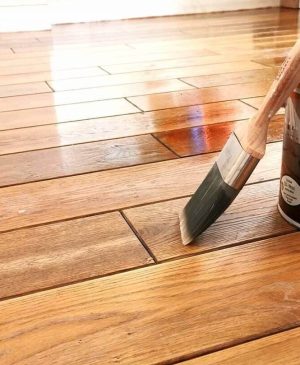The interior of a home is more than just a collection of rooms; it is a reflection of your personality, taste, and lifestyle. A well-designed home can uplift your mood, inspire creativity, and provide a sense of comfort and belonging. However, the task of improving your home’s interior and decor can often feel daunting, especially when faced with the abundance of styles, trends, and design elements available. Fortunately, improving your home doesn’t require a complete overhaul or expensive renovations. With thoughtful planning and a few creative touches, you can transform any space into a sanctuary that combines beauty with functionality.
1. Start with a Vision: Understand Your Needs and Preferences
Before embarking on any decorating project, it’s essential to establish a clear vision. Begin by considering how you use your space and what kind of atmosphere you want to create. Are you looking for a relaxing retreat, a space for entertaining, or perhaps a home that fosters productivity? Understanding your needs will guide your choices throughout the design process.
Consider the following:
-
Mood and Atmosphere: Would you like your home to feel serene and calm, or do you prefer a lively, energetic atmosphere?
-
Lifestyle Needs: Do you need space for a growing family, a home office, or a quiet reading nook?
-
Personal Style: Do you gravitate towards minimalist designs, cozy vintage spaces, or perhaps a blend of modern and traditional elements?
Once you have a clear understanding of what you want, the next step is to identify a style or theme that resonates with you. This could be anything from Scandinavian simplicity, bohemian eclecticism, to industrial chic. A cohesive theme will ensure that your choices, from furniture to color palette, complement each other, creating a harmonious atmosphere throughout the home.
2. Define Your Color Palette
Colour is one of the most effective tools at your disposal when it comes to improving the look and feel of your home. It can influence your mood, enhance the perception of space, and create visual interest. The right colour palette sets the tone for each room and allows you to express your personality in subtle or bold ways.
-
Neutral Tones: If you prefer a calming, understated ambiance, opt for neutral colours such as whites, creams, greys, or soft taupes. These tones create a serene environment and provide a versatile backdrop that can accommodate pops of bolder colours through accents like throw pillows, artwork, or rugs.
-
Bold Statements: For a more energetic or dramatic vibe, incorporate deeper shades like navy blue, forest green, or charcoal grey. These colours can work well in living rooms, dining areas, or even bedrooms, as they create depth and sophistication.
-
Pastels and Soft Shades: For rooms where relaxation is key, consider using soft pastel hues like light blues, mint greens, or soft yellows. These colours promote a peaceful atmosphere and are perfect for bedrooms or bathrooms.
-
Accent Colours: Once you’ve established a primary colour scheme, don’t forget to introduce accent colours. Whether you choose a bright orange, mustard yellow, or emerald green, accents can infuse life into a space. The key is balance—too many vibrant hues can overwhelm the room, so it’s best to incorporate them in small doses through textiles, accessories, or feature walls.
3. Furniture and Layout: Maximize Functionality and Flow
The layout and furniture of a room are not only about aesthetics but also about practicality. A well-arranged space can make even the smallest of rooms feel more expansive, while the right furniture pieces can elevate the overall design without overwhelming the space.
-
Furniture Selection: Choose furniture pieces that fit both your style and your functional needs. Large furniture in small rooms can make the space feel cramped, so consider pieces with a more compact profile. Alternatively, in larger spaces, oversized furniture or statement pieces can help fill the room while adding character.
-
Arrangement and Flow: The arrangement of furniture is crucial in creating a comfortable environment. Avoid clutter and aim for open pathways that encourage ease of movement. When designing the layout of a living room, for example, it’s important to create conversation zones—arranging seating in a way that encourages interaction and promotes a balanced flow.
-
Multi-Functional Furniture: In smaller spaces or for those seeking practicality, opt for multi-functional furniture. Pieces that can serve more than one purpose—such as ottomans that double as coffee tables, or sofa beds that transform into guest accommodations—allow you to maximize your space without sacrificing style.
4. Add Personality with Accessories and Decor
Accessories are the finishing touches that complete a room’s design. These decorative elements can add texture, colour, and warmth to your home, turning it from simply functional to truly stylish. The beauty of accessories lies in their ability to be changed with the seasons or when the mood strikes, allowing you to refresh your home with minimal effort.
-
Throw Pillows and Blankets: Adding decorative throw pillows to your sofa or bed can instantly breathe life into a room. Choose pillows in various sizes, patterns, and textures for visual interest. Pair them with cozy throw blankets for added comfort.
-
Artwork and Wall Decor: Wall art is one of the most impactful ways to personalize your space. Choose pieces that resonate with your aesthetic or evoke the desired mood. Whether it’s a large statement painting, a series of framed prints, or a collection of vintage mirrors, artwork adds character and depth to your walls.
-
Rugs and Textiles: Rugs not only provide comfort but also serve as statement pieces that can tie a room together. Choose rugs that complement your colour scheme and furniture. Layering different textures and materials, such as wool, jute, or silk, can add dimension and warmth to your floors.
-
Lighting: Lighting plays a pivotal role in any design scheme. Consider using a combination of ambient, task, and accent lighting to create a balanced and dynamic atmosphere. Pendant lights, chandeliers, and table lamps not only illuminate but also act as decorative pieces. A well-lit room enhances the colours and textures within, contributing to a space that feels both inviting and functional.
5. Incorporate Natural Elements: Bringing the Outdoors In
Nature has a calming influence, and incorporating natural elements into your home can promote a sense of tranquility. Whether through the use of plants, natural materials, or outdoor-inspired decor, the presence of nature can enhance both the aesthetic and the well-being of your space.
-
Houseplants: Plants are an easy and effective way to breathe life into a room. Whether you choose large statement plants like fiddle-leaf figs or small succulents, greenery adds a refreshing touch. Plants also have the added benefit of improving indoor air quality and providing a sense of calm.
-
Wood and Stone Elements: Incorporating natural materials such as wood, stone, or bamboo into your decor helps create an organic, earthy feel. Consider wooden furniture, stone countertops, or even wood-framed mirrors to add warmth and texture to your home.
-
Natural Lighting: Whenever possible, allow as much natural light into your home as you can. Not only does sunlight improve mood and well-being, but it also makes your space feel more open and airy. Light, flowing curtains or blinds that allow for maximum light are an excellent choice.
6. Personal Touches: Infuse Your Unique Style
Lastly, your home should be a true reflection of you. Personal touches are what make a space feel lived in and loved. Consider incorporating items that have sentimental value, such as family heirlooms, travel souvenirs, or handmade pieces. These elements not only add uniqueness but also imbue your home with character and warmth.
-
Customizable Decor: Choose decor items that are both functional and personal. Customized cushions with family names or bespoke artwork that reflects your interests can make a room feel more tailored to your life.
-
Collectibles and Curios: If you have a collection of items that are meaningful to you, find creative ways to display them. Whether it’s vintage trinkets, books, or unique pottery, these small items can add personality and a sense of history to your home.
Conclusion
Improving your home with thoughtful interior design and decor is about more than just choosing beautiful furniture and colours. It’s about creating an environment that enhances your lifestyle, reflects your personality, and brings you joy. By starting with a clear vision, curating a balanced colour palette, selecting functional furniture, and adding the right decor accents, you can craft a home that is both stylish and welcoming. With a little imagination and attention to detail, your home can become a true sanctuary—a place that nourishes both the body and the soul.


















